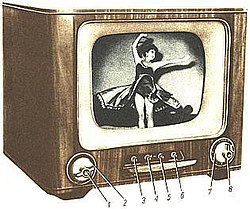
Television in Honduras consists of both local channels and foreign television, normally distributed through cable.

Television in Honduras consists of both local channels and foreign television, normally distributed through cable.
Television was introduced in 1959 on Canal 5 (Channel 5) after the idea came by at a Mexico City hotel the previous year. [1]
Honduras had initially adopted ATSC Standards for digital terrestrial television broadcasting, but later decided to adopt the ISDB-T International standard used in many other Latin American nations. [2]
The first Digital High Definition TV Station, CampusTv, was founded by Universidad de San Pedro Sula.
The following are some of the TV channels founded in Honduras.